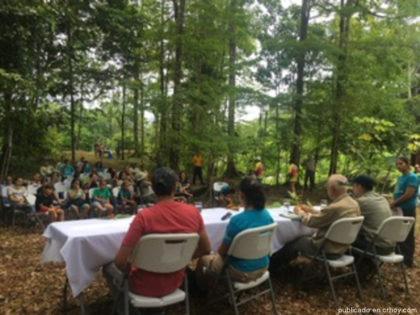
Neotrópica
The 40 years of the Golfo Dulce Reserve were strengthened this Saturday with the consolidation of the Arboretum project, aimed at increasing the knowledge and awareness of local stakeholders in forest conservation in the area.
The Neotrópica Foundation explained that the initiative was developed during the last three years with an investment of ¢35 million in funds coming from the cooperation between the United States and Costa Rica.
In agreement with the Conservation Area of Osa (ACOSA), three rural communities and a population of over 3,000 people benefited, such as Bahía Chal, Alto San Juan, and San Juan de Sierpe. The project aims at strengthening the fight against the illegal activities in the Reserve, such as illegal hunting, indiscriminate deforestation, and the change in the use of land towards agricultural activities.
An Arboretum is a collection of trees of ecological value and in this case is composed of species of high biological value for the Osa Peninsula, since many of the species found there are endemic, meaning they are typical of the place,”
said Neotrópica in a press release.
The Local Committee of the Arboretum is made up of young people from the three participating localities.
What was done in these years?
– A Local Implementation Unit (ULI), or the Local Committee of the Arboretum, which will soon administer the Arboretum. It is a system acquired by the Neotrópica Foundation, which was replicated during this process and which consists of empowering members of the communities to participate actively in the execution of a project
– An ecological assessment, with the participation of botanists and experts in mammals, birds, and insects to identify the species found in the area.
– An interpretation of the Copaifera Camibar Trail, which allows easy and safe access to the Arboretum and is part of the attractions of the project to draw in national and foreign visitors which will contribute to the socioeconomic development of the area-
– The Centennial Forest was established, an area destined within the Arboretum to be reforested with endemic and threatened species and to maintain those already planted since 2015.
– The Environmental Education Program was implemented in the schools of the community to train environmental leaders to help ensure the conservation and sustainable use of forest resources, complemented by a playroom for visiting children to encourage learning by playing.